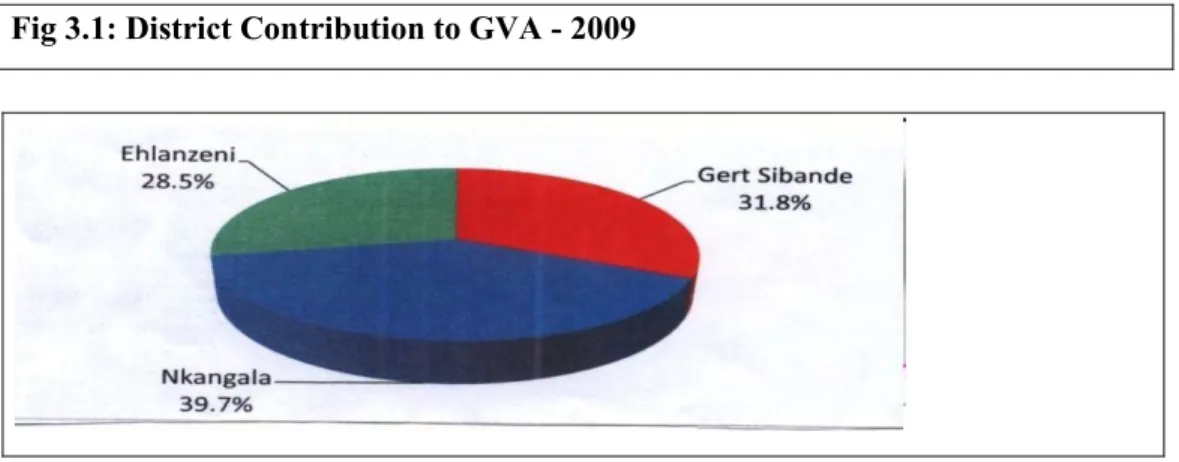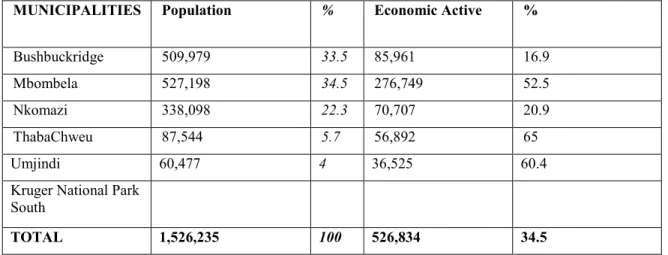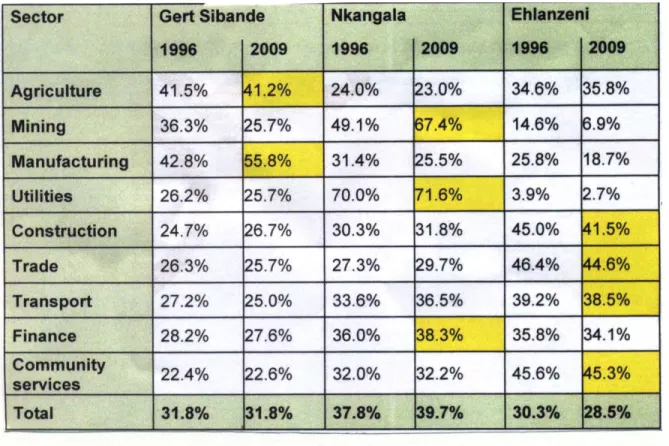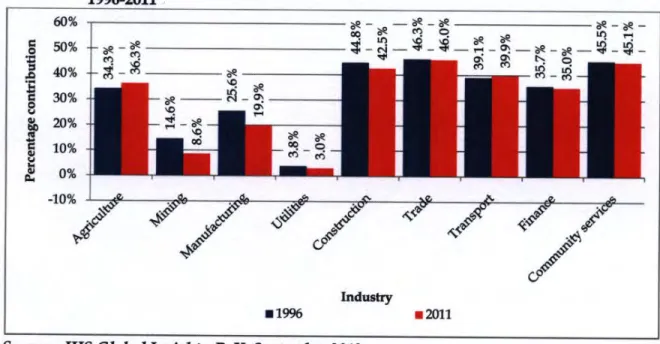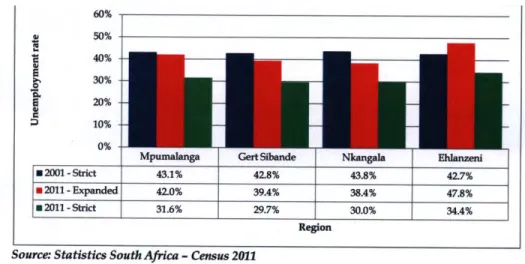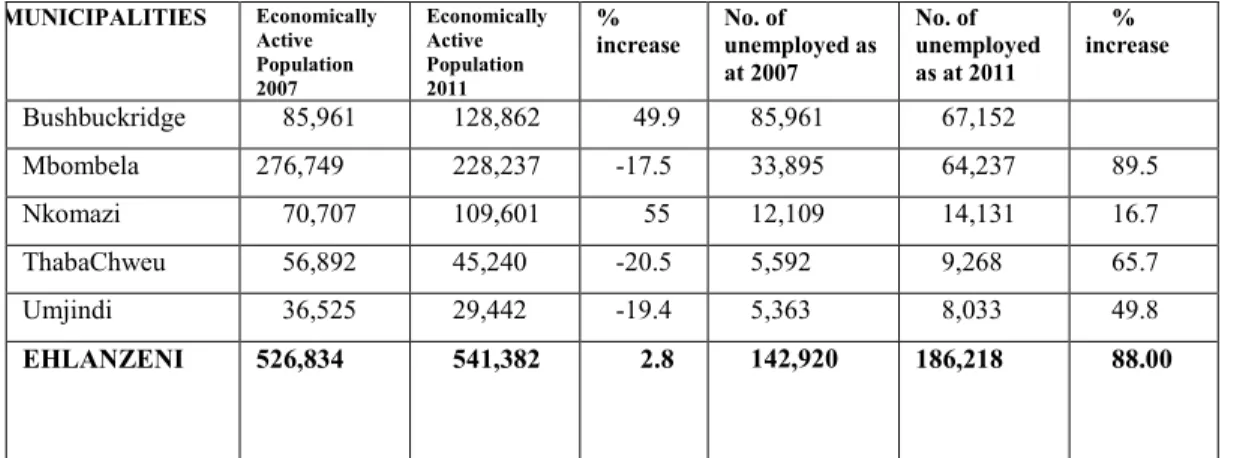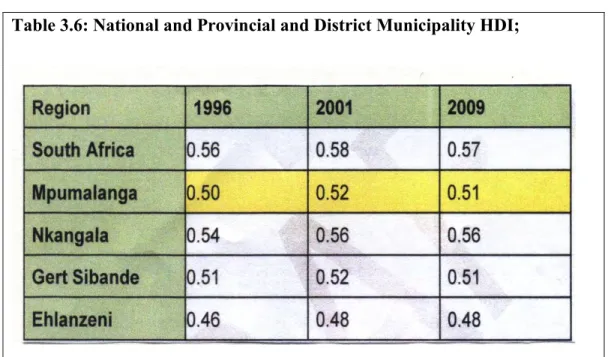The purpose of the research is to investigate how practitioners perceive the role of leadership in the conceptualization and implementation of LED in district municipalities. The research uses a qualitative method that uses a practitioner research perspective in the tradition of the reflective approach attributed to Schon (1983).
INTRODUCTION
BACKGROUND OF THE RESEARCH TOPIC
The framework was adopted by a forum made up of members of the Provincial Executive Councils and the Minister for Provincial and Local Government (now called Cooperative Government and Traditional Affairs). Ehlanzeni District Municipality completed its own framework in 2007 and the period targeted for the implementation of the national framework was between 2006 and 2011.
LITERATURE OVERVIEW
LED as an emerging field of study
The conference adopted a national LED strategy framework called "Stimulating and Developing Sustainable Local Economies: National Framework for Local Economic Development (LED) in South Africa 2006-2011". According to Canzanelli, the participatory nature of the local economic development process and its governance can improve the performance of both the public and private sectors through partnerships formed to build social capital.
Leadership as an anchor for Local Economic Development
However, the question that remains to be answered is what constitutes sophisticated and proactive leadership from the perspective of a practitioner. Scharmer (2009) provides some perspectives of "Theory U," which is a mechanism for developing and practicing leadership from the perspective of a "future as it emerges." This provided a compatible framework for the application of reflective practitioner research for this research study.
RESEARCH PROBLEM STATEMENT
THE RESEARCH OBJECTIVES
To identify management challenges faced by practitioners in the implementation of local economic development in district municipalities. To make recommendations that will improve the effectiveness of management in the implementation of local economic development in district municipalities.
RESEARCH QUESTIONS
To examine how practitioners perceive the role of management in municipal strategic apex, during conceptualization and implementation of LED in district municipalities.
OVERVIEW OF THE RESEARCH METHODOLOGY
The perspective of the reflective practitioner was explored through conducting conversations with the community of Local Economic Development practitioners operating in the Ehlanzeni District Municipality whose views were explored. Moreover, in the reflective practitioner approach to research, the researcher and practitioner collaborate in a different way than that envisaged in applied scientific research by entering into a partnership, rather than a contract between a research consultant and a client.
STRUCTURE OF THE REPORT
As the study relates to leadership in the field of LED, the researcher used Sharmer's (2009) twenty-four principles of Theory-U to guide the reflective practitioner approach, first to compare the progress regarding the implementation of LED through a participatory process; and second, to draw out the management issues that still need attention in the future implementation of LED in Ehlanzeni District Municipality. Chapter 4, Case Study, presents a comprehensive case study of one of the LED initiatives in Ehlanzeni District Municipality.
CONCLUSION
Chapter six, recommendations and conclusions, provides a set of recommendations and conclusions about leadership in LED from a practitioner's perspective.
INTRODUCTION
THEORETICAL PERSPECTIVES OF LOCAL ECONOMIC DEVELOPMENT
- Definition of LED
- Evolution of LED towards a people centred process (1960s -2000s)
- Models for Local Economic Development
- The Universal Model of Development
- Local models of development
- Common successful features of LED
- Structures for facilitating leadership effectiveness
- The LED environment in South Africa
- Policy and Legislation that supports LED
- Other critical policy initiativesthat support LED
- Summary of literature findings on LED
The definition and conceptualization of local economic development has also been influenced by developments in the natural sciences. The third local economic development implementation structure identified was local economic development agencies (LEDAs).
THEORETICAL PERSPECTIVESON LEADERSHIP
- Definition of leadership
- Theories of Leadership
- Trait Theory
- Great Person Theory
- Contingency theory
- Contemporary Perspectives on Leadership
- Transactional Leadership
- Charismatic Leadership
- Transformational Leadership
- Systems Model of Leadership
- Theory U: Leadership from the future as it emerges
- The Reflective Practice and Vision of Social Progress
Building a shared vision involves the practice of what Senge (2006) calls “the skills of discovering shared future images” that foster internal commitment to its realization (Senge, 2006: 9). The principle is consistent with building social capital. by promoting a participatory process and establishing partnership between stakeholders to ensure success in local economic development, as mentioned by Canzanelli (2001:13). This discipline is critical in creating the implementation structures that ensure LED success, as mentioned by Canzanelli v) Systems Thinking - The Fifth Discipline.
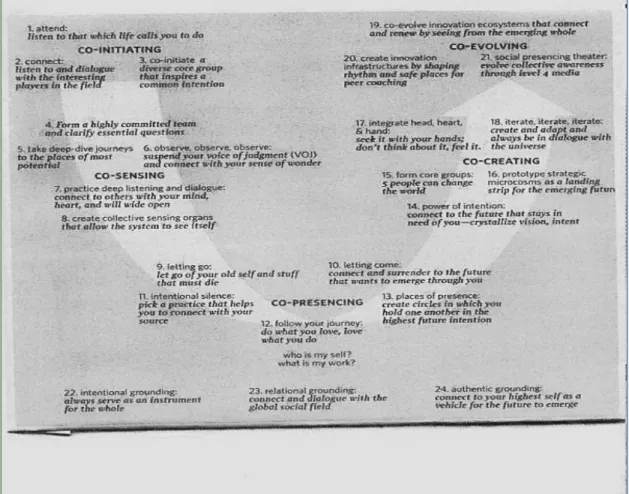
ISSUES OF LEADERSHIP OF LED IN SOUTH AFRICA
- Features of leadership as per South Africa’s LED Framework
- Perspectives of LED prior to 2006
- Situation post 2006 national framework
- Intra and intergovernmental relations
- Partnerships
- Policy and legislative environment
- Institutional arrangements
- Integrated Local Economic Development and Planning
- Building a conducive developmental local environment
- Summary of the general conclusions of the situation
The framework further outlines the outcomes of such management as follows:. i) Establishing effective public-private partnerships to stimulate investment and establish a center for coordination of private and public stakeholders. ii) Capacity to identify comparative and competitive advantages in the district and among the municipalities in the district. iii). Although it is encouraging to note evidence of success in the transformation of declining mining and railway towns into tourism and retirement towns towards 2009, more work still lies ahead as "the general picture in these localities is not promising" (Rogerson, 2011 :165) ).
CONCLUSION
On Local Economic Development
On Leadership of Local Economic Development
On Leadership in Local Economic Development in South Africa
However, studies done before and after 2006 showed that there is still more work to be done that may require better leadership to move it forward. Primarily, the research aims to establish the perspective of practitioners on the current situation of LED and the leadership issues affecting it within the Ehlanzeni District Municipality.
INTRODUCTION
DEMOGRAPHIC OVERVIEW OF EHLANZENI DISTRICT MUNICIPALITY
- Geographic location
- Size of Ehlanzeni Municipality
- Population statistics
- Economic Indicators
- Growth Value Add per district and sector
- Labour indicators
- Income Indicators
- Poverty indicators
- Education Indicators
Ehlanzeni district municipality has the lowest contribution to growth value addition (GVA) among the three district municipalities in the province. Mbombela Local Municipality leads all municipalities in Ehlanzeni Municipality in GDP per capita contribution to Mpumalanga Province.
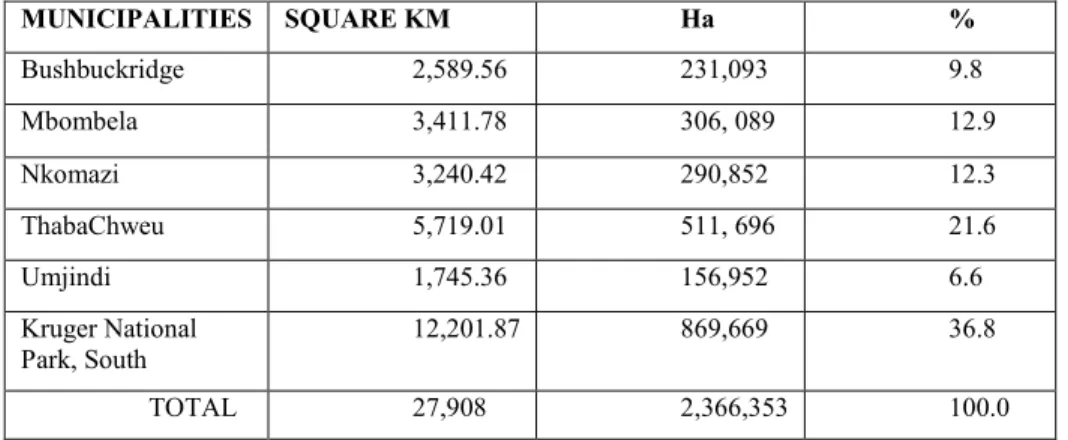
LED LEADERSHIP ISSUES WITHIN EHLANZENI DISTRICT MUNICIPALITY
- Leadership environment
- Capacity for comparative and competitive advantages
- Development of innovative Spatial Development strategies
- Mobilisation and building of a pool of skilled people
- Development of district LED strategic frameworks
- The Local Economic Development unit at Ehlanzeni District Municipality
- Creating a centre for co-ordination of stakeholders
- Effective implementation of intergovernmental relations
- Creation of environment for thecreation of jobs
- Integrated programming of the projects and action plan
- Monitoring and evaluation
The manager leads the local economic development unit and is responsible to the director of local economic development, rural development and tourism development in the district municipality. The guidelines for the implementation of the municipality's local economic development strategy define special development incentives in the district municipality.
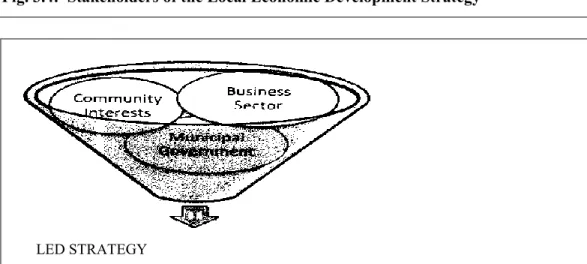
CONCLUSION
The monitoring and evaluation matrix in Figure 3.7 above provides a framework for tracking performance during the implementation of the local economic development strategy to ensure nothing goes off track. The framework helped by providing a benchmark for progress made in improving conditions for the implementation of local economic development in the municipality of Ehlanzeni.
INTRODUCTION
Kvale and Brinkmann's seven stages of interviewing also helped to sequence the research process. Design, which is the stage where the researcher plans and designs all seven stages of the research;
THEORETICAL UNDERPINNING OF RESEARCH QUESTIONS
Research questions versus structures and techniques
Research question, terminology and methodology
The research focus is on exploring management practices during the conceptualization and implementation of local economic development in municipalities. They were clearly categorized by the sector they were in and the size of the unit.
Process leading to concretely formulated research questions
It is the iterative cycle above that led to the concrete research questions outlined in section 4.1 of this chapter. Source: Tomas G (2011) How to do your case study: A guide for students and researchers, page 37, SAGE, London.
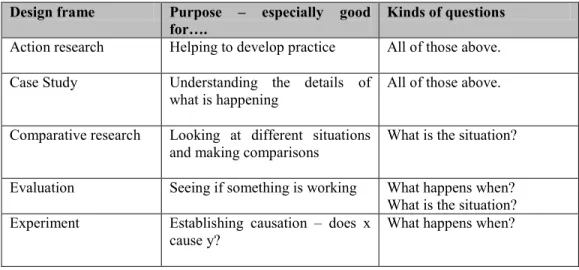
RESEARCH METHODOLOGY AND DESIGN
- Qualitative Method in a Holistic Single Case
- Practitioner’s research perspective in the tradition of reflective approach
- Sharmer’s (2009) twenty four Theory-U principles
- Principles that were not covered by the study
- The antithesis of Theory U
It also provided a basis for development and improvement of the Local Economic Development Practices in the district municipality (Thomas, 2011:37). Evaluating how a service performs or ensuring that service user's views are taken into account when planning developments in services... The research can be part of a higher or further degree or it can be independent of any academic qualification (Fox et al define the practitioner researcher further as a person who is not only employed in a professional capacity, but also involved in the research.
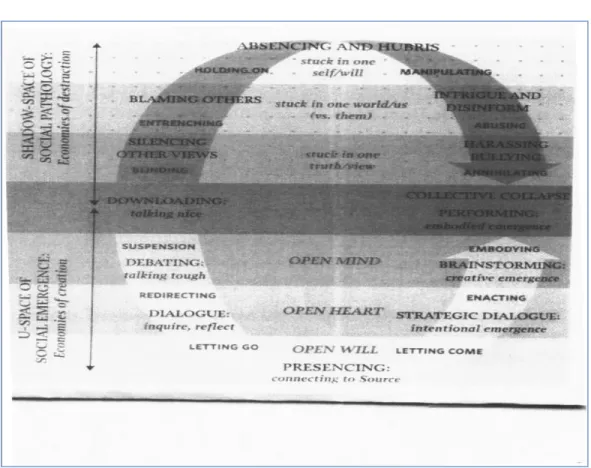
DATA COLLECTION METHOD
Ethical issues
The researcher used the University of KwaZulu-Natal code of ethics throughout the research. The letter ensured confidentiality and the participants' right to refuse participation, and was the basis for participants' consent.
SAMPLING
The researcher first sent a written request to all the municipal managers of the municipalities within the Ehlanzeni District Municipality for permission to carry out the research. The researcher conducted one-on-one interviews with three of the coordinators in the researcher's office according to their choice, while the other two responded in writing to the guiding questions.
RESEARCH CHALLENGES AND LIMITATIONS
Eight were from small businesses, with three of these coming from previously advantaged communities and five from previously disadvantaged communities, mostly within the tourism and hospitality industry, and one was from the NGO sector. The researcher was both a direct and indirect contributor to the study, due to his position as MEC for collaborative government and traditional affairs within the government of Mpumalanga (Ehigie and Ehigie.
DATA PRESENTATION AND ANALYSIS
Word count, which can be used when a researcher assumes that the frequency of words can give some meaning to a phenomenon;. In the case of this study, the researcher chose the keyword-in-context option so that the actual words used by the participants could be used to establish their meaning.
DISSEMINATION OF RESEARCH FINDINGS
CONCLUSION
INTRODUCTION
DATA ANALYSIS
THE GENERAL FINDINGS
For example, Mbombela held a summit to revive the work of the Local Economic Development Forum. This resulted in a perception that the municipalities were not serious about Local Economic Development.
SPECIFIC FINDINGS
- Policy and legislative environment
- Strength of strategies
- Stakeholder involvement and empowerment
- Vision and mission
- Administrative capacity
- Institutional capacity and their environment
- Commitment to implementation
- Creating aneffective partnership
- Co-ordination and communication
The feeling we have from the previous documents is that it was input from stakeholders. Some of the participants resented the fact that LED units in most local municipalities employed consultants in the development of local economic development initiatives instead of involving the rank-and-file members themselves.
PRACTITIONERS’ RESPONSES REGARDING EFFECTIVE LEADERSHIP
- Building a learning organisation
- LED strategy development process
- Power of common vision and mission
- Complimentary partnership
- Role of spheres of government
- Stakeholder involvement
- Building of capacity to implement
- Skills and knowledge
- Building capacity for strong development partnership
- Monitoring, evaluation and impact assessment
If they want to be part of the municipality's citizens, they must get involved. In fact, none of the participants talked much about the involvement of labor in LED in most of the municipalities.
FACTORS HINDERING EFFECTIVE LEADERSHIP
- Lack of referral to policy frameworks
- Lack of focus
- Group dynamics in the LED Forums
- Weak Partnerships
- Weak political and administrative leadership
- Lack of commitment to action
- Lack of monitoring and evaluation
- Lack of professionalism
Another critical management issue that emerged in the engagement with the practitioners in Ehlanzeni District Municipality is the capacity of the administration to translate executive decisions into action. The investigation showed that there has been a lot of talk at LED Forum level without an effort to implement them from the administrative wing in the municipalities.
PRACITIONERS’ PERSPECTIVES ON GOING FORWARD
- Creating common vision
- Effective communication and co-ordination
- Upgrading knowledge, skills and experience
- Effectivepartnerships
- An open door policy
This thesis reveals the practitioners' dissatisfaction with the coordination of the stakeholder forum including LED forums in the various municipalities. Institutional arrangements and capacity building play a crucial role in LED's success in all areas.
CONCLUSION
From the perspective of participating stakeholders, poor communication and coordination between stakeholders, administrative capacity failures and unprofessional ethics within secretariat structures such as the LED units in municipalities have diluted the importance of the LED function.
INTRODUCTION
GENERAL CONCLUSIONS
The collective vision in this framework improved the political will of the Ehlanzeni District Municipality. However, most of the general findings of Xuza (2007), before the adoption of the 2006 framework, and Rogerson (2011), after its adoption, still apply in the Ehlanzeni municipality.
RECOMMENDATIONS
Organisational leadership capacity
Leadership development
The research process facilitated an environment for practitioners to pay attention and reflect on the current situation of local economic development in Ehlanzeni district municipalities. In the future, the opinions of these participants can be put to good use, as a good leadership process should encourage the appreciation of others' views and their contributions to the implementation of local economic development.
Implications for future research
DPLG (2006b). Stimulating and Developing Sustainable Local Economies: The National Framework for Local Economic Development (LED) in South Africa. Developing Local Economic Development Policies and Practices in South Africa with special reference to smaller urban centres.
